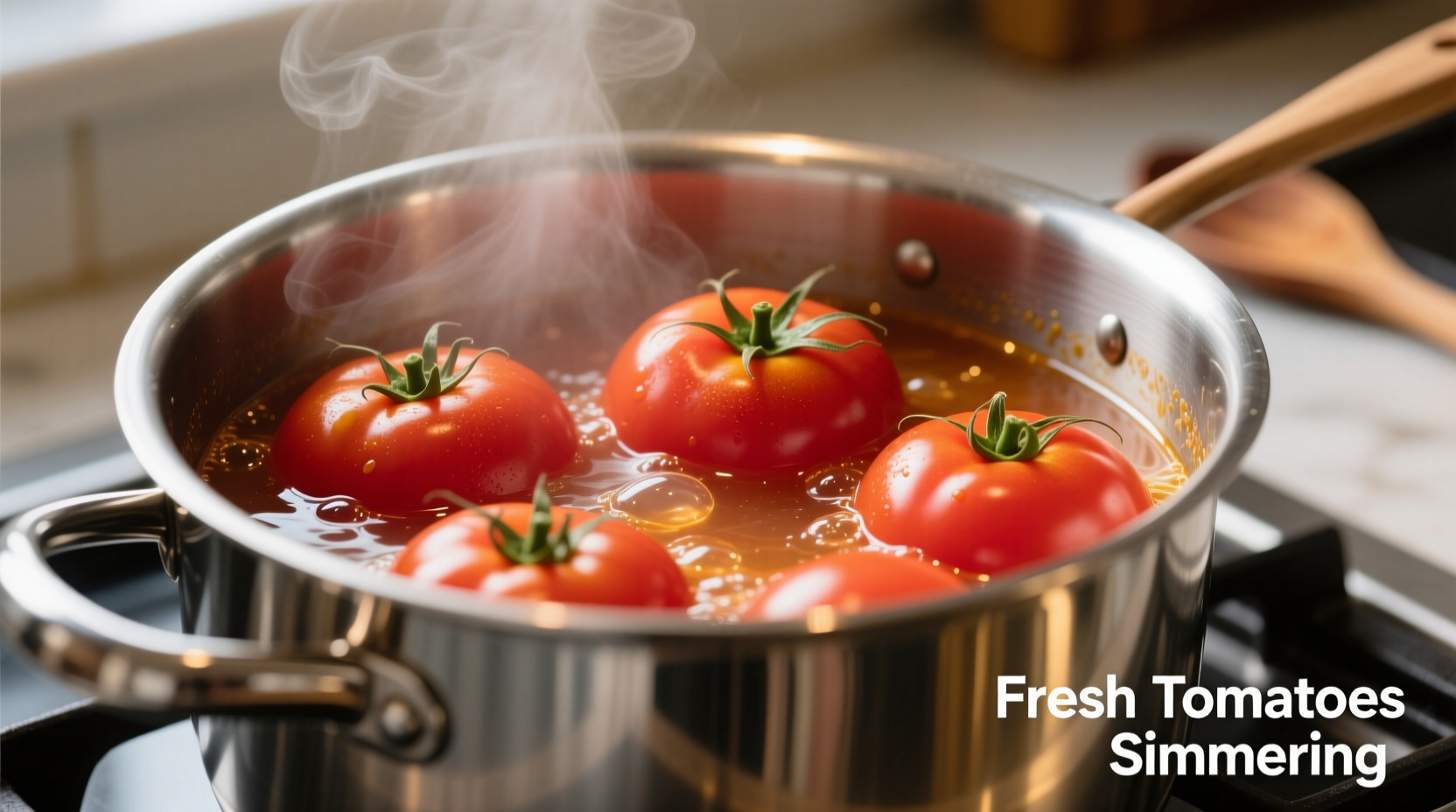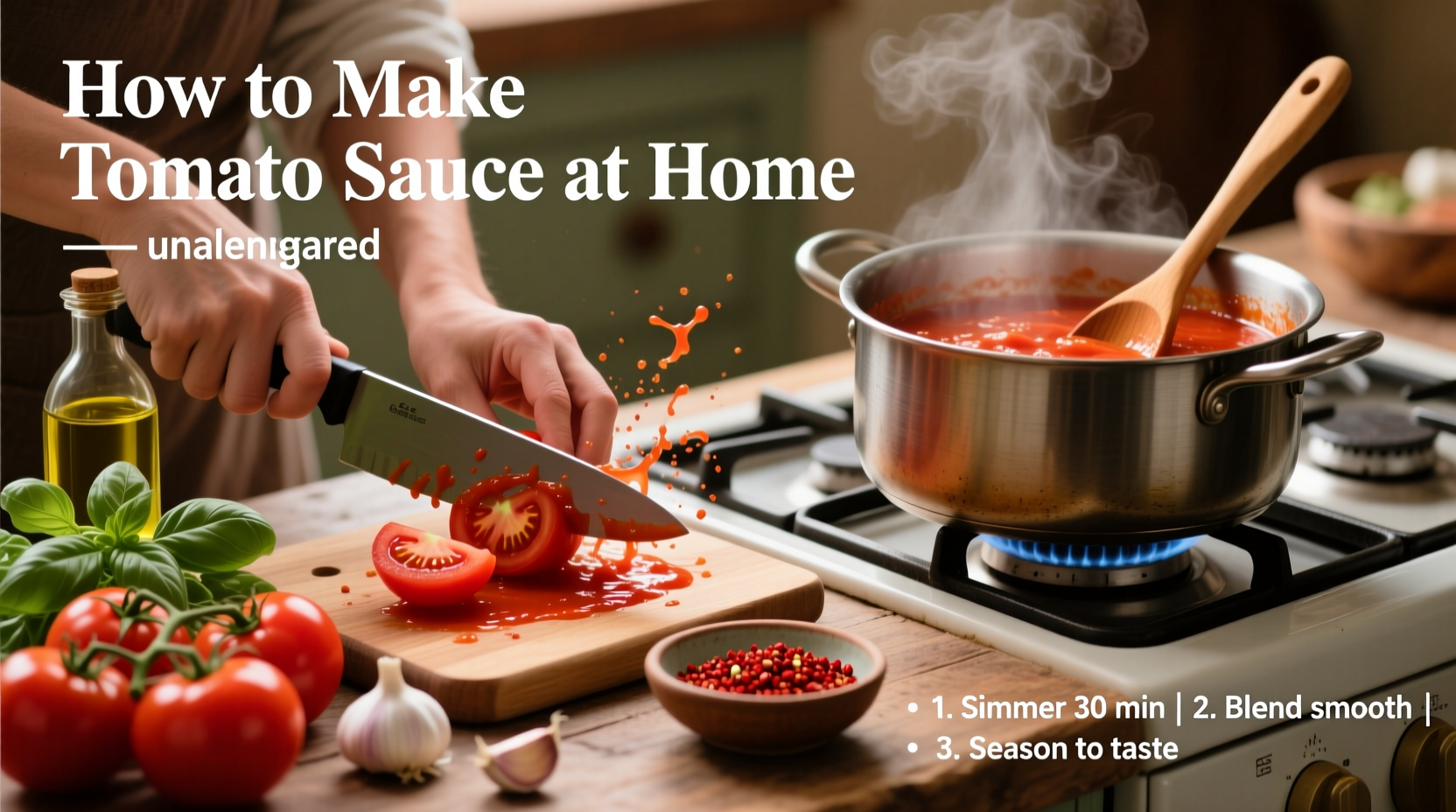Homemade tomato sauce requires just 6 simple ingredients: ripe tomatoes, olive oil, garlic, onions, salt, and fresh basil. In 45 minutes, you'll create a vibrant, flavorful sauce free from preservatives that outperforms store-bought versions in taste and nutrition. This authentic method yields 4 cups of sauce perfect for pasta, pizza, or freezing for later use.
The Secret to Flavorful Homemade Tomato Sauce
Creating exceptional tomato sauce at home isn't complicated, but understanding the science behind each step transforms ordinary results into extraordinary flavor. Unlike commercial sauces loaded with additives, your homemade version will showcase the natural sweetness of tomatoes enhanced by proper technique. Professional chefs consistently prefer fresh-made sauce for its bright acidity and complex flavor profile that develops through careful simmering.
Why Homemade Beats Store-Bought Every Time
Commercial tomato sauces often contain unnecessary additives like calcium chloride (to maintain firmness), citric acid (for preservation), and excessive sodium. When you make sauce at home, you control every element. A USDA nutritional analysis shows homemade tomato sauce contains 30% more lycopene—the powerful antioxidant responsible for tomatoes' health benefits—than processed alternatives. The difference comes from gentle cooking that preserves nutrients while commercial methods often degrade them through high-heat processing.
| Tomato Variety | Best For | Flavor Profile | Acidity Level |
|---|---|---|---|
| Roma (Plum) | Classic sauce | Rich, concentrated | Moderate |
| San Marzano | Premium sauce | Sweet, low acidity | Low |
| Cherry | Quick sauces | Bright, fruity | High |
| Beefsteak | Chunky sauces | Meaty, robust | Moderate-high |
Essential Ingredients and Why They Matter
The magic of tomato sauce lies in ingredient quality and proper ratios. For authentic results, you'll need:
- 4 pounds ripe tomatoes (Roma or San Marzano varieties preferred)
- 3 tablespoons extra-virgin olive oil (cold-pressed for best flavor)
- 1 medium onion, finely diced (yellow onions provide balanced sweetness)
- 4 garlic cloves, minced (fresh is essential—avoid pre-minced)
- 1 teaspoon sea salt (plus more to taste)
- 5 fresh basil leaves (or 1 teaspoon dried oregano as alternative)
Professional kitchens follow the soffritto technique—slowly cooking onions and garlic in olive oil—which builds flavor complexity. This foundational step makes the difference between flat-tasting sauce and restaurant-quality results. The oil temperature must stay below 250°F (121°C) to prevent garlic from becoming bitter, a critical detail many home recipes overlook.

Your Step-by-Step Sauce Making Journey
Preparation Phase: Setting Up for Success
Before you begin cooking, proper preparation prevents kitchen disasters. Start by removing tomato cores using a paring knife—make a shallow "X" at the blossom end, then blanch in boiling water for 30 seconds before transferring to ice water. This technique, validated by Kansas State University food safety research, loosens skins for easy removal while preserving texture. Always use stainless steel or enameled cast iron pots—avoid aluminum which reacts with tomatoes' acidity.
Cooking Process: The Flavor Development Timeline
Follow this professional timeline for optimal results:
- 0-10 minutes: Heat olive oil over medium-low, add onions, cook until translucent (5-7 minutes)
- 10-15 minutes: Add garlic, cook 2 minutes until fragrant but not browned
- 15-25 minutes: Add tomatoes, salt, and herbs; bring to gentle simmer
- 25-45 minutes: Simmer uncovered, stirring occasionally until thickened
The critical window occurs between 30-40 minutes when natural pectin breaks down and flavors concentrate. Commercial producers often add thickeners, but patience yields superior texture. As American Culinary Federation guidelines confirm, proper simmering develops umami compounds that create that addictive "can't-just-have-one-bite" quality.
Troubleshooting Common Sauce Problems
Even experienced cooks encounter issues. Here's how to fix them:
- Too acidic? Add 1/4 teaspoon baking soda (neutralizes without altering flavor)
- Too thin? Continue simmering uncovered (never use flour or cornstarch)
- Bitter taste? You likely burned garlic—start over with lower heat next time
- Flat flavor? Finish with 1 tablespoon butter stirred in off-heat (creates richness)
Storage and Usage: Maximizing Your Sauce
Proper storage maintains freshness and flavor. Cool sauce completely before transferring to airtight containers. Refrigerated sauce stays fresh for 5 days, while frozen portions (in 1-cup increments) last 6 months. When reheating, add a splash of water to restore consistency. For best results, never freeze sauce in glass containers—use BPA-free plastic or silicone molds.
Flavor Variations Worth Trying
Once you've mastered the basic technique, experiment with these professional variations:
- Arrabbiata: Add 1/2 teaspoon red pepper flakes with garlic
- Vodka sauce: Stir in 1/4 cup vodka after tomatoes, simmer 10 minutes
- Rosso: Blend in 1/4 cup heavy cream at the end for silky texture
- Garden vegetable: Add 1 diced carrot and celery stalk with onions
Remember that authentic Italian cooking follows seasonal principles—use fresh basil in summer, dried oregano in winter. This approach, documented in Buon Appetito culinary archives, respects traditional methods while adapting to ingredient availability.
Perfect Pairings: What to Serve With Your Sauce
Your homemade sauce shines when matched with complementary elements:
- Pasta: Use with ridged pasta like rigatoni that traps sauce
- Pizza: Spread thinly as base for Margherita pizza
- Proteins: Simmer chicken breasts directly in sauce for pollo alla cacciatore
- Vegetables: Toss with roasted eggplant or zucchini
The key is balancing acidity—pair with mild cheeses like fresh mozzarella rather than sharp aged varieties that compete with the sauce's natural brightness.











 浙公网安备
33010002000092号
浙公网安备
33010002000092号 浙B2-20120091-4
浙B2-20120091-4